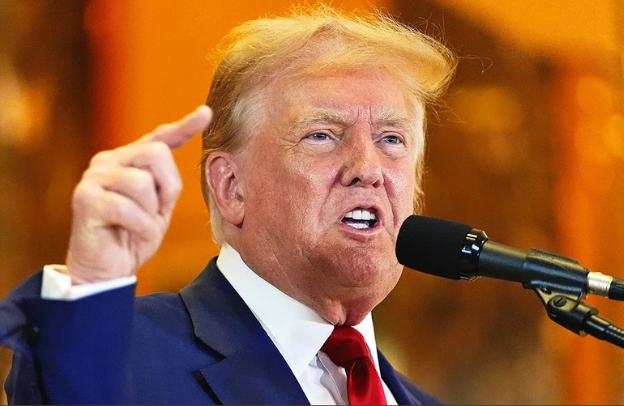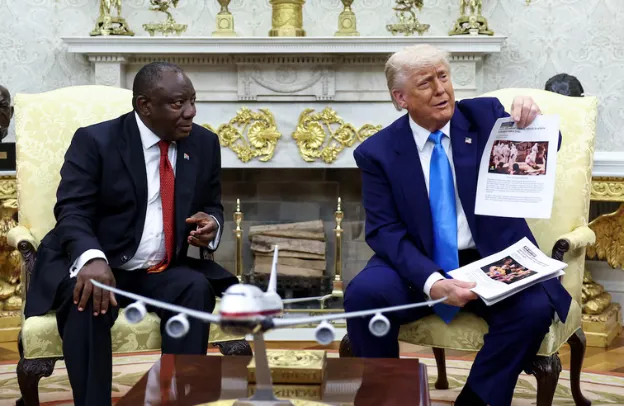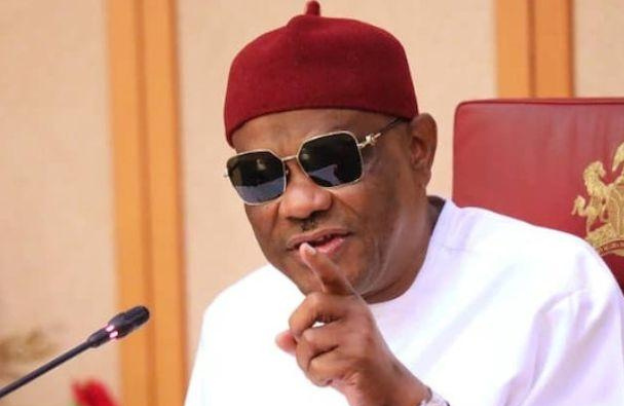Trump’s “America First” Agenda and Its Impact on Global Business: A Tipping Point in the Age of Globalization

In late November 2024, President-elect Donald Trump made headlines again with a bold, controversial threat: imposing a 100% tariff on any country that seeks to replace the U.S. dollar as the world’s reserve currency. In a message posted on Truth Social, Trump specifically targeted the BRICS nations—Brazil, Russia, India, China, South Africa, and an expanding coalition of countries like Iran, the UAE, and Egypt—warning them that if they continued to push for a new currency, they could kiss access to the American market goodbye.
Want to learn more about storytelling? Start by downloading the first chapter of The Storytelling Mastery.
“We require a commitment from these Countries that they will neither create a new BRICS Currency, nor back any other Currency to replace the mighty U.S. Dollar or, they will face 100% Tariffs and should expect to say goodbye to selling into the wonderful U.S. Economy,” Trump wrote.
This statement underscores the larger economic battle between the United States and rising global powers, and what that means for international business in an increasingly interconnected world.
You may be wondering what such a drastic economic proposal could mean for multinational corporations, consumers, and investors. Will Trump’s protectionist approach hinder or help American business? And could it prompt a fundamental shift in the way global commerce functions in the 21st century?
The “America First” Doctrine: A Retrospective
Trump’s brand of economic nationalism, encapsulated in his “America First” agenda, has always prioritized domestic interests, often at the expense of global economic cooperation.
From his early days as president in the first term, Trump made it clear that he would renegotiate trade deals, introduce tariffs on foreign goods, and pull back from multilateral agreements that he saw as unfair to American businesses.
His 2016 campaign promise to bring jobs back to America and protect the nation from global economic forces was a powerful appeal to many Americans who felt left behind by the forces of globalization.
But these policies have come at a high cost. Trump’s earlier rounds of tariffs—targeting China, Mexico, Canada, and the European Union were aimed at boosting American industry, particularly in manufacturing and agriculture.
But the consequences were immediate and far-reaching. American consumers faced higher prices on goods ranging from electronics to food. The impact of his trade wars was especially severe on industries reliant on global supply chains, such as automotive manufacturing and tech.
See also Cultivating Resilience: Innovations in Disaster-Proofing Crops
For businesses, the costs were significant: higher input prices, disrupted supply chains, and increased uncertainty in an already volatile global market.
In the end, while Trump’s tariffs may have delivered some wins for particular sectors, many economists argue that the broader impact has been negative. A report from the National Bureau of Economic Research found that tariffs imposed by the Trump administration on Chinese goods alone cost U.S. consumers $831 annually per household.
And yet, as you look at his latest statements and policies, it’s clear that Trump is doubling down on protectionism, believing that his aggressive stance on trade will ensure American dominance, even if it alienates traditional allies. But have we not travelled this road before?
BRICS: The Challenge to U.S. Dominance
At the heart of Trump’s latest threat is the growing power of the BRICS nations. What began as a loose coalition of Brazil, Russia, India, and China now representing some of the world’s fastest-growing economies has evolved into a formidable geopolitical alliance.
In recent years, BRICS has expanded its membership to include South Africa, Iran, Saudi Arabia, the UAE, Egypt, and Ethiopia, with other countries like Turkey, Malaysia, and Argentina expressing interest in joining.
As this bloc gains economic and political influence, it also challenges the dominance of the U.S. dollar. The idea of creating a new currency for BRICS countries has been floating for years.
Brazilian President Luiz Inácio Lula da Silva, in particular, has advocated for a common currency in South America to reduce reliance on the U.S. dollar. But as the alliance grows in size and scope, the pressure to de-dollarize is mounting.
“As long as we’re not united, we won’t make South America a developed continent in all its potential,” Lula said. That was reported in El Pais article, “Brazil president proposes South America currency, as he hosts summit to rebuild regional bloc”.
Countries like China and Russia, facing economic sanctions and trade restrictions imposed by the West, are looking for ways to bypass the U.S.-dominated financial system.
The stakes couldn’t be higher for the U.S. The dollar has been the global reserve currency for over seven decades, providing the United States with unmatched economic leverage.
It allows the U.S. to print money without the same consequences that other countries would face, and it underpins global trade, finance, and investments. A shift away from the dollar would undermine this power, and Trump is taking a stand against it.
The U.S. Dollar and Trump’s Economic Strategy
So, why does the U.S. dollar matter so much? The dollar’s dominance in global trade, banking, and investment is one of the key factors that allows the U.S. to exert influence on the world stage.
The article by David Lubin, a Michael Klein Senior Research Fellow in the Global Economy and Finance Program, titled “Donald Trump’s policies risk making the US dollar a source of global instability,” warns that the U.S. dollar, already expensive, could become even more overvalued due to Trump’s economic policies. This overvaluation, he argues, poses a significant risk of increasing global financial instability.
You might also like Growing Together: Building Community Through Collaborative Agribusiness Storytelling
David Lubin added that President-elect Donald Trump has a dollar problem. “In recent months he has shown a clear preference for a weaker exchange rate to support the competitiveness of US exports and help reduce the US trade deficit.”
As the global reserve currency, the dollar is used for the vast majority of international transactions, from oil trading to global debt issuance. This means that countries around the world must hold reserves in dollars, giving the U.S. enormous economic sway.
However, in recent years, challenges to this system have grown. In 2023, Russian President Vladimir Putin and Chinese President Xi Jinping as reported by sources both called for alternatives to the dollar, arguing that the U.S. had weaponized the currency by imposing sanctions on Russia and other countries.
In response to these pressures, the BRICS nations have been increasingly exploring mechanisms to bypass the U.S.-controlled financial system. A potential BRICS currency could provide an alternative to the U.S. dollar and reduce the alliance’s vulnerability to U.S. sanctions.
Trump’s rhetoric, therefore, is a direct response to this growing challenge. By threatening to impose 100% tariffs on any country that moves away from the dollar, he is signaling a willingness to go to extraordinary lengths to preserve U.S. dominance in global finance.
“There is no chance that the BRICS will replace the U.S. Dollar in International Trade, and any Country that tries should wave goodbye to America,” Trump declared in his social media post. This rhetoric underscores his belief that the U.S. must defend its economic interests by any means necessary.
But how effective are such threats? While Trump’s tariffs would undoubtedly cause significant disruptions in global trade, it’s unclear whether they would stop BRICS countries from pursuing alternatives to the dollar.
After all, the world economy is no longer solely driven by the United States. China, for example, has already begun to use its own currency, the yuan, in international transactions, and Russia has increasingly turned to non-dollar-based trade arrangements with countries like India and Iran.
A 100% tariff might push these countries even further toward alternatives, making Trump’s strategy more of a gamble than a guaranteed success.
The Impact of Trump’s Tariffs on Global Business
If Trump were to follow through on his threat, the consequences for international business could be severe. Tariffs are essentially taxes on imported goods, which means that businesses would face higher costs for foreign products.
In turn, these higher costs would likely be passed on to consumers, leading to inflation and a reduction in purchasing power.
For multinational companies, the situation would be even more complicated. Many businesses rely on global supply chains, with components and raw materials sourced from various countries.
A sudden and dramatic increase in tariffs would disrupt these supply chains, leading to delays, cost overruns, and the need to find new suppliers. American companies that depend on imports from BRICS countries, whether it’s steel from Brazil or electronics from China would be hit hard by the additional costs.
At the same time, BRICS nations would likely retaliate. China and Russia, for example, could impose their own tariffs on U.S. goods, which would further escalate the trade war and harm businesses on both sides.
See also Innovation in Agriculture: Showcasing Technological Advancements Through Storytelling
The economic uncertainty generated by such a scenario would make investors nervous, potentially leading to a slowdown in global investment. U.S. firms could face a loss of market access in critical emerging markets, and multinational companies could be forced to reevaluate their strategies for sourcing and selling goods globally.
For investors, the risk of escalating trade conflicts is particularly concerning. Trump’s proposed tariffs on BRICS countries would create significant volatility in global markets, especially in sectors that rely on international trade, such as technology, energy, and manufacturing.
The uncertainties created by Trump’s policies could make it harder for investors to assess the risks and rewards of doing business in different regions, leading to a more cautious, risk-averse approach to global investments.
Globalization in the Trump Era: Can Protectionism Survive?
Trump’s protectionist policies raise an important question: can economic nationalism coexist with the realities of globalization? Globalization has led to an unprecedented level of interconnectedness between countries, driven by advances in technology, communications, and transportation.
For businesses, this has meant the ability to source materials and labor from around the world, sell goods in diverse markets, and tap into new pools of capital.
But with rising geopolitical tensions, trade wars, and the increasing push for de-dollarization, the future of globalization is uncertain.
Trump’s policies reflect a desire to retreat from this interconnected world, opting instead for a more isolated, self-sufficient approach to economic growth. Whether this approach will succeed or backfire remains to be seen.
If Trump’s “America First” policies are adopted more widely, the result could be a world where trade is increasingly fragmented along national lines, with countries opting for regional rather than global solutions.
The rise of alternative currencies and trade blocs could erode the global reach of the U.S. dollar, making it harder for American businesses to maintain their competitive edge in global markets.
Conclusion: A Fork in the Road for Global Business
The decision facing business leaders and policymakers is stark. In a world increasingly divided between nationalist economic policies and the realities of globalization, the future of international business is uncertain.
Trump’s aggressive protectionist stance, including the looming threat of 100% tariffs on BRICS countries, could reshape the global business landscape in ways that are difficult to predict.
The key for business leaders, investors, and policymakers is to remain agile, prepared for rapid shifts in U.S. trade policy, and ready to adapt to the evolving dynamics of a more fragmented world economy.
As the international community grapples with these changes, one thing is clear: the age of seamless global trade may soon be over, giving way to a new era marked by rivalry, competition, and economic nationalism.
Want to learn more about storytelling? Start by downloading the first chapter of The Storytelling Mastery.






